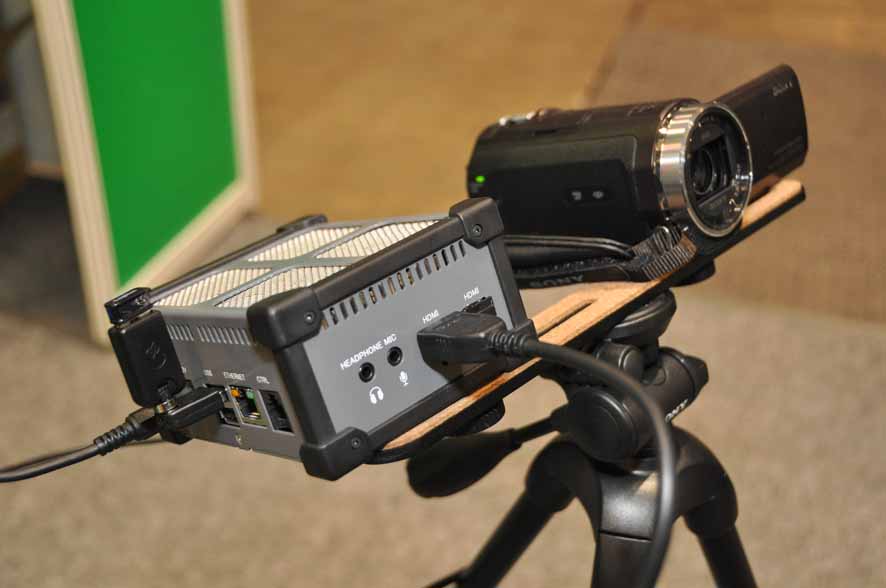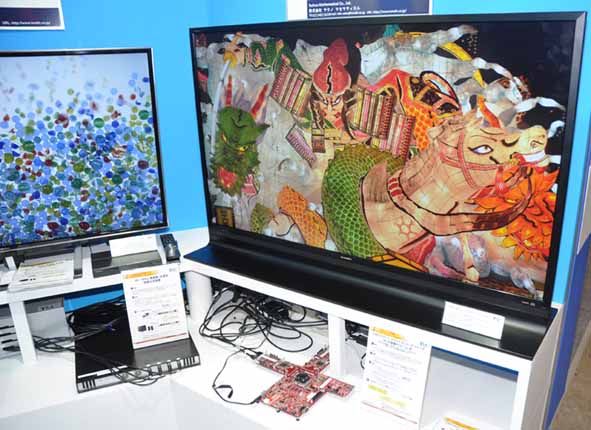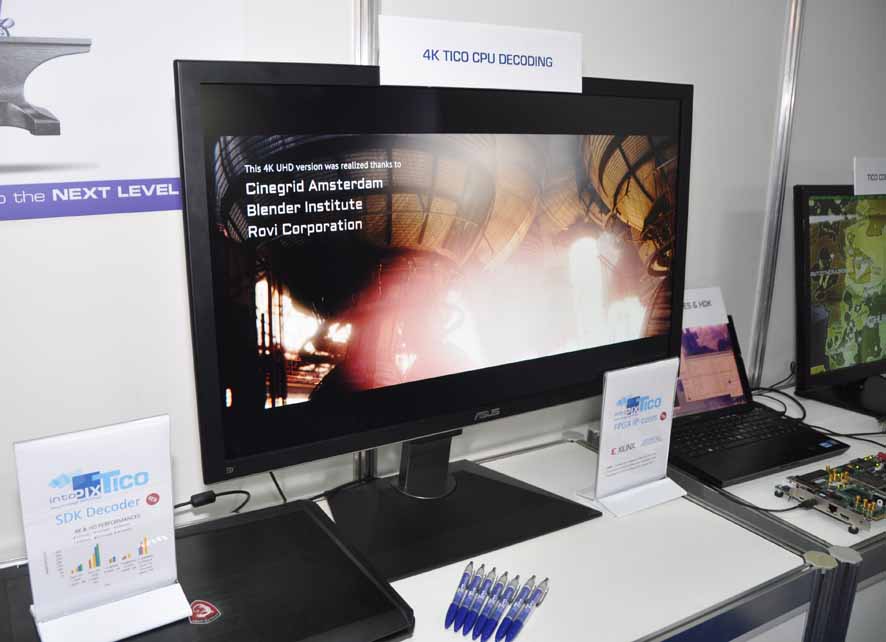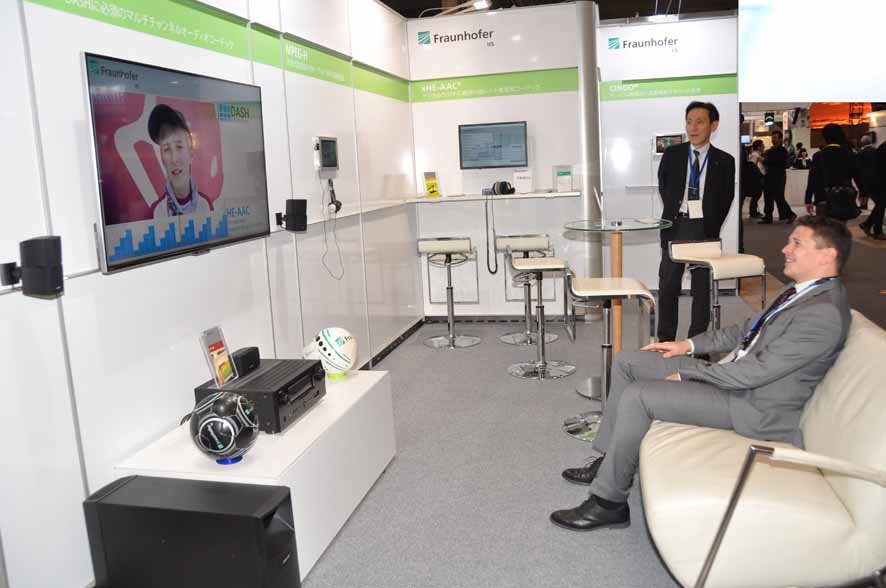Column: Inter BEE 2014 Report 2: A Wealth of Encoding Technologies | Rich Range of Audio/Video Transmission Tools on Display
2014.12.12 UP
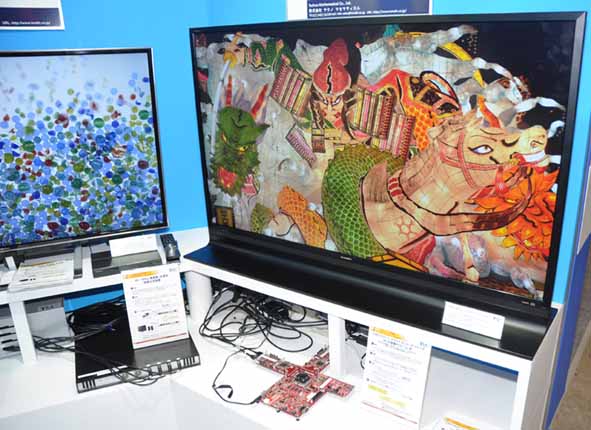
At Inter BEE 2014, 4K seemed to have become the de facto technology. It was a memorable experience that showed how the way is being paved to even richer, more beautiful video. Along with this wealth of improvements was a wide lineup of hi-fi encoding (compression) technologies, which are essential for broadcasting and video transmission.
Last year, in addition to the HEVC/H.265 international standard (referred to here as HEVC), there was wider use of the existing MPEG-4 AVC/H.264 spec (referred to here as AVC/H.264), as well as a range of proprietary new technologies. In this way, encoding tech was no slouch at this year's Inter BEE. Today, the industry calls for ever more advanced A/V solutions, and improving encoding to achieve better compression and transmission is the only way to meet these needs. This being the case, compression solutions continued to show even more development.
(Koji Suginuma, Nihon University College of Industrial Technology, Visual Communication Journal Editorial Writer)
■AVC - towards a universal standard
Japanese terrestrial and digital satellite broadcasts use MPEG-2. HD video is compressed at between 15 and 20Mbps. MPEG-2 became an international standard in 1993, and it has been in use for over twenty years. Following improvements to the standard, recent encoders have achieved quite reasonable HD quality at compression below 10Mbps.
In 2003, the AVC/H.264 spec, which extolled the same video quality as MPEG-2 at half the bitrate, became standardized. This is the most widely used encoding format for Blu-ray discs, and it is also widespread on videos online. When it first became a standard, it was said to be too complex and difficult to embed in hardware, but today it is used in not only dedicated LSIs, but even in IP cores (containing LSI circuit information). Today, AVC/H.264 is not processed by a standalone LSI, but as one part of system LSI processes.
The same growth can be expected of HEVC. HEVC is said to be ten times harder than AVC/H.264, with significant man-hours and time required to develop encoders and decoders for it. This year, in addition to the software implementations of HEVC that we have seen until now, there were more products that implemented the spec in FPGAs. Encoder/decoder LSI development outside of Japan is progressing at a rapid pace, and we will soon enter an era where HEVC is installed onboard chipsets.
■Postcard-sized data transmission devices
Explorer exhibited the EHH-6321E/D, a super small form factor live transmission device with a footprint slightly smaller than a postcard. This device was developed in collaboration with Fuji Television and works as a set -one unit encodes HDMI input into AVC/H.264 while another unit of the same size decodes it. It can be connected to consumer-use camcorders and other devices that only have HDMI connectors, allowing for easy transmission of audio and video. It supports bitrates between 64Kbps and 3Mbps and is compatible with B-GAN portable satellite networks and other formats. IP is used for the transmission, with the encoded output sent over Ethernet.
To receive data, the EHH-6321-D decoder is connected to a computer and managed via dedicated software. Up to 16 decoders can be attached to a single computer.
The units also feature the rate controller jointly developed with NHK, which Explorer has been incorporating in its devices in the past. This function adapts to network traffic to throttle the rate. The unit can also be powered with batteries, supporting workflows where power sources are limited. All one needs is a small camera and IP connection to broadcast a live feed.
■Low latency and high fidelity
The company also exhibited devices equipped with an HEVC 4K codec and a low latency HEVC codec for HD. The 4K units were based on "many core" processors (having ten or more cores) that perform processing in software. This setup is used to conduct Main profile/level 5.1 operations.
The low-latency codec unit supports HD transmission for the Main 10 profile and level 5.1. Latency is below 100 milliseconds. Existing products have hit the 300 millisecond mark, so this is a large-scale reduction in latency. This unit was installed in a FPGA.
■TMC pursues IP development
Techno Mathematical developed an HEVC (4K60P) decoder IP core, which was demoed at the show. The Kintex 7 (XC7K325T) from Xilinx was featured with the decoder IP. Some HEVC units on the market have HM reference software ported to them as test tools when standardizing them for the HEVC spec. However, HM is ultimately a theoretical test reference and is not intended for practical use. Techno Mathematical has researched the underlying algorithms to develop its own IP core. Similarly, Fraunhofer IIS (FhG/IIS) developed a 1080@30P decoder IP last year, and they showed it performing 150MHz operations in a FPGA. Techno Mathematical has also developed its own set of algorithms. The company has achieved 4K@60P using the Main 10 profile.
Going forward, the company plans to develop encoder solutions. In addition to developing a 4K encoder this year, it plans to work on an 8K encoder next year.
■Introduction of unique specs
In addition to the standardized broadcast specs described above, some unique compression methods designed for use within or between devices were also shown. Belgian intoPIX exhibited its TICO compression, a super low-latency, visual lossless compression. Data is compressed to a fourth of its size at a fixed delay within several scan lines. The amount of delay can be throttled by the user. This solution can be implemented in a small-scale FPGA; since external memory is not required, it is ideal for applications where cost-cutting is important. The demo given showed a feed being decoded on a laptop computer and displaying 4K video.
■Next-generation audio
Audio encoding is also showing marked progress. FhG/IIS demoed MPEG-H, the next-generation broadcast audio codec, and xHE-AAC, a codec for digital radio. MPEG-H supports 3D audio to create a realistic, three-dimensional sound. xHE-AAC, meanwhile, is a universal compression scheme that can be used for both spoken voice and audio, reaching stereo fidelity at the low bitrate of 12Kbps.
Fraunhofer also showed CINGO, a surround sound solution for mobile devices, demonstrating how, even though it is intended for headphone use, it can produce an omni-directional sense of sound.
At this latest Inter BEE, a wide range of compression technologies and encoding devices were shown to match different purposes. HEVC implementation is expected to continue, so we can expect to see even more robust products in the future. Other unique schemes also showed how FPGA can be used to open up new avenues for implementation. What this adds up to for users is being able to have the right tools for the right job at their fingertips.



